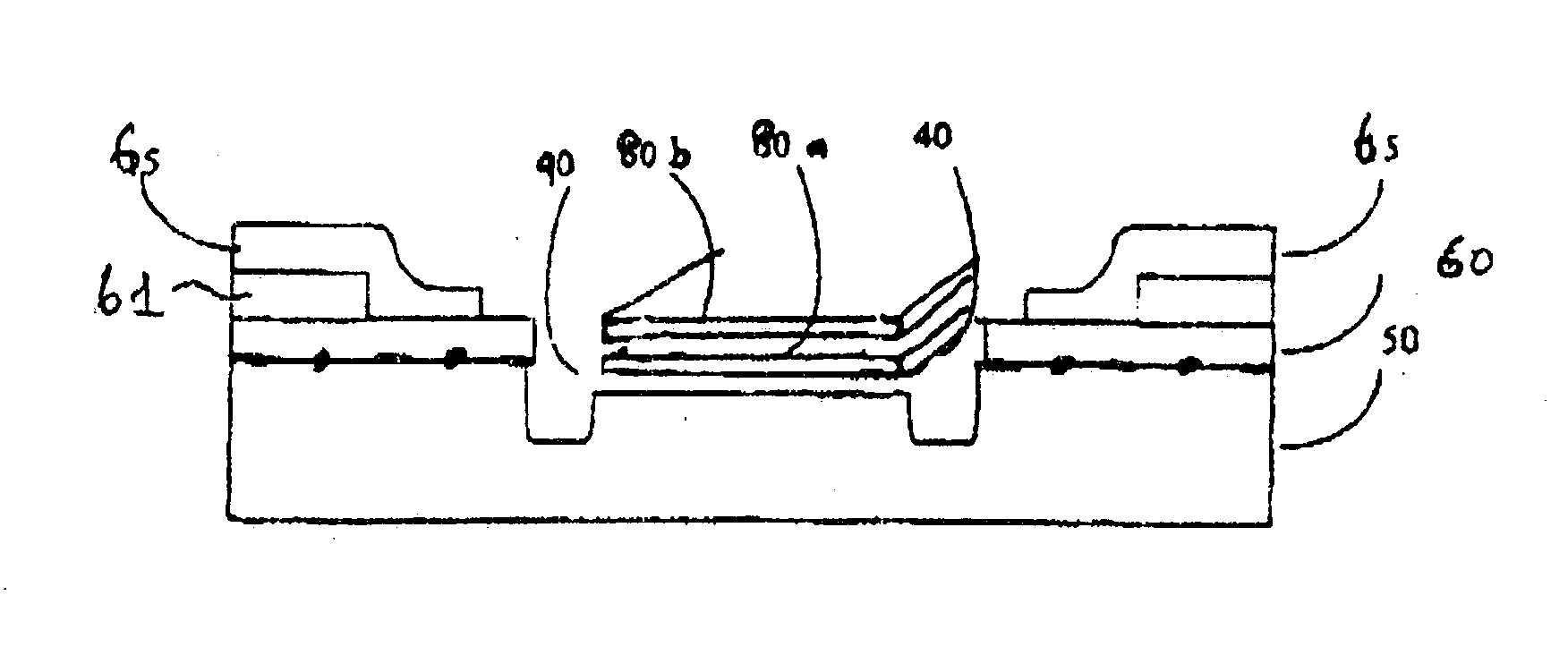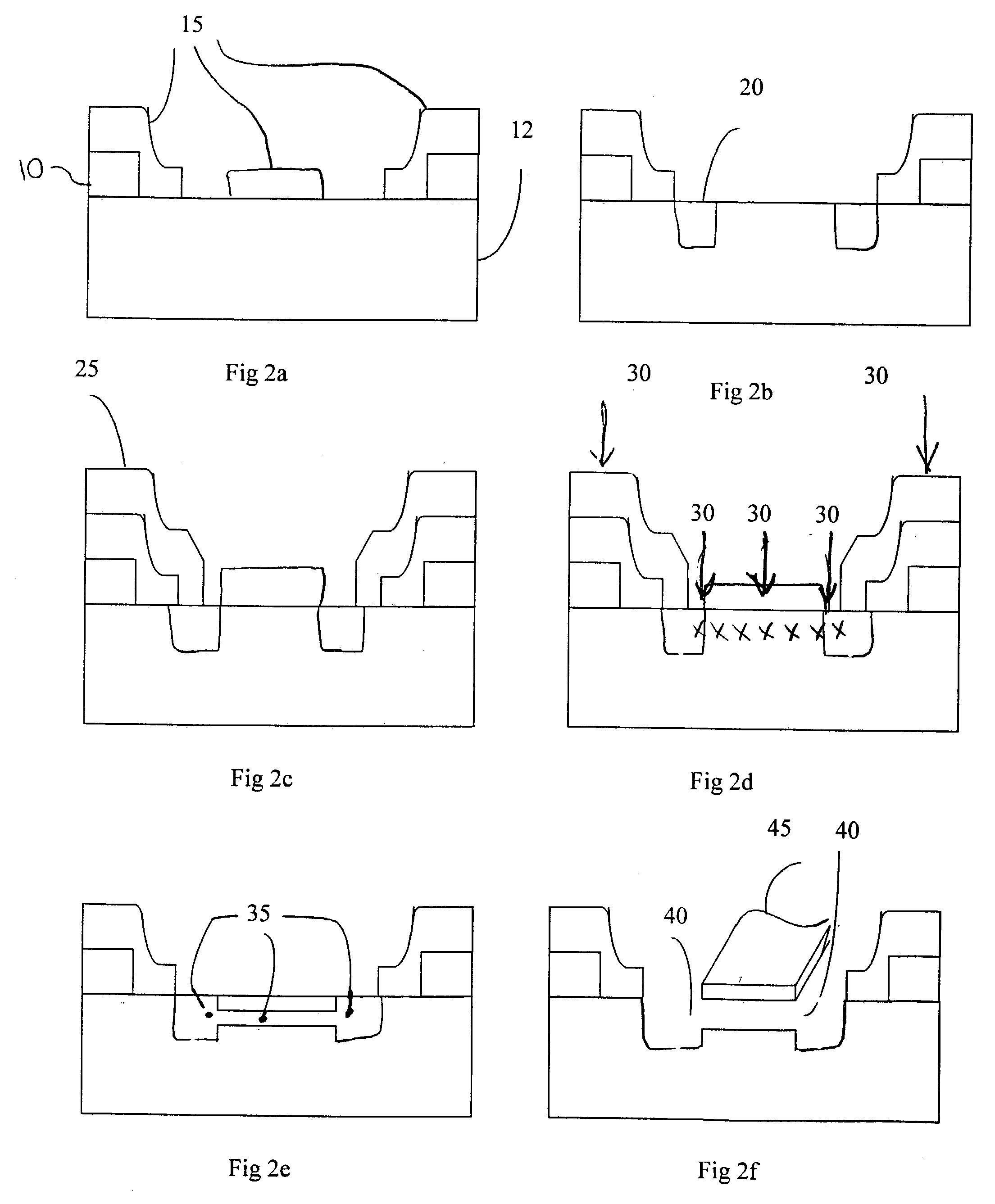Technique for fabricating MEMS devices having diaphragms of ''floatting'' regions of single crystal material
- Summary
- Abstract
- Description
- Claims
- Application Information
AI Technical Summary
Benefits of technology
Problems solved by technology
Method used
Image
Examples
Embodiment Construction
[0025] FIG. 2, to which reference should now be made, illustrates a representation of the sequence of steps used to manufacture microelectromechanical (MEMS) devices with a process that allows the formation of floating or cantilevered single crystal structures instead of the polysilicon structures used in the prior art.
[0026] In FIG. 2a, an etch stop layer 15 such as silicon nitride is deposited over existing structures 11 using a vapor deposition process typically in the temperature range of 800.degree. C.-900.degree. C., and then masked and etched, leaving the nitride in direct contact with the surface of a single crystalline substrate at the boundaries of all regions that will not become floating structures, leaving regions that will become floating structures in between
[0027] In FIG. 2b, using a thermal oxidation furnace in a temperature range of 800.degree. C.-1250.degree. C., perform a local oxidation of silicon (LOCOS) process sequence after a trench etch step. This process s...
PUM
 Login to View More
Login to View More Abstract
Description
Claims
Application Information
 Login to View More
Login to View More - R&D
- Intellectual Property
- Life Sciences
- Materials
- Tech Scout
- Unparalleled Data Quality
- Higher Quality Content
- 60% Fewer Hallucinations
Browse by: Latest US Patents, China's latest patents, Technical Efficacy Thesaurus, Application Domain, Technology Topic, Popular Technical Reports.
© 2025 PatSnap. All rights reserved.Legal|Privacy policy|Modern Slavery Act Transparency Statement|Sitemap|About US| Contact US: help@patsnap.com



